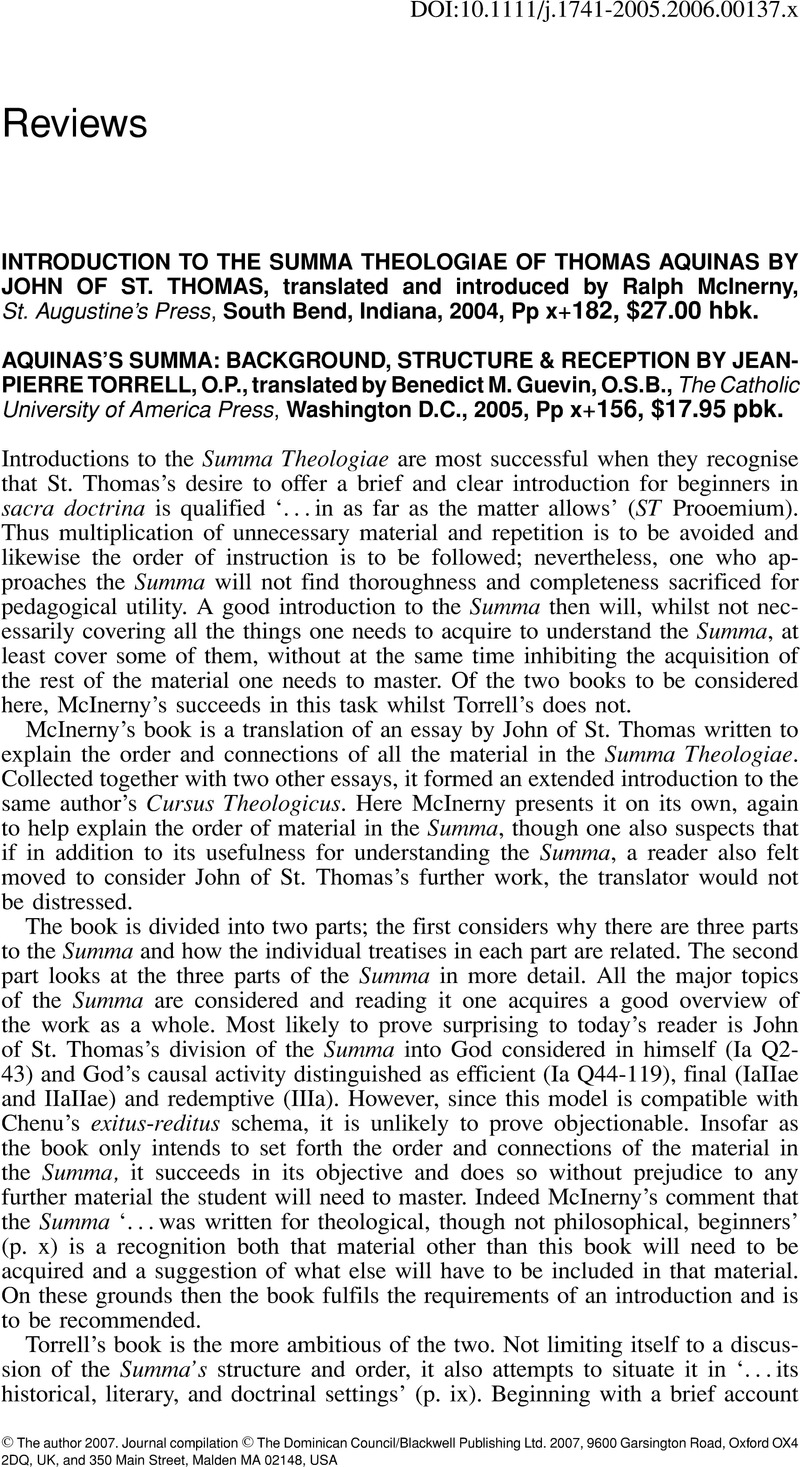No CrossRef data available.
Article contents
Introduction to the Summa Theologiae of Thomas Aquinas by John of St. Thomas, translated and introduced by Ralph McInerny, St. Augustine's Press, South Bend, Indiana, 2004, Pp x+182, $27.00 hbk. - Aquinas's Summa: Background, Structure & Reception by Jean-Pierre Torrell, O.P., translated by Benedict M. Guevin O.S.B., The Catholic University of America Press, Washington D.C., 2005, Pp x+156, $17.95 pbk.
Review products
Introduction to the Summa Theologiae of Thomas Aquinas by John of St. Thomas, translated and introduced by Ralph McInerny, St. Augustine's Press, South Bend, Indiana, 2004, Pp x+182, $27.00 hbk.
Aquinas's Summa: Background, Structure & Reception by Jean-Pierre Torrell, O.P., translated by Benedict M. Guevin O.S.B., The Catholic University of America Press, Washington D.C., 2005, Pp x+156, $17.95 pbk.
Published online by Cambridge University Press: 01 January 2024
Abstract
An abstract is not available for this content so a preview has been provided. Please use the Get access link above for information on how to access this content.

- Type
- Reviews
- Information
- Copyright
- Copyright © The author 2007. Journal compilation © The Dominican Council/Blackwell Publishing Ltd. 2007


